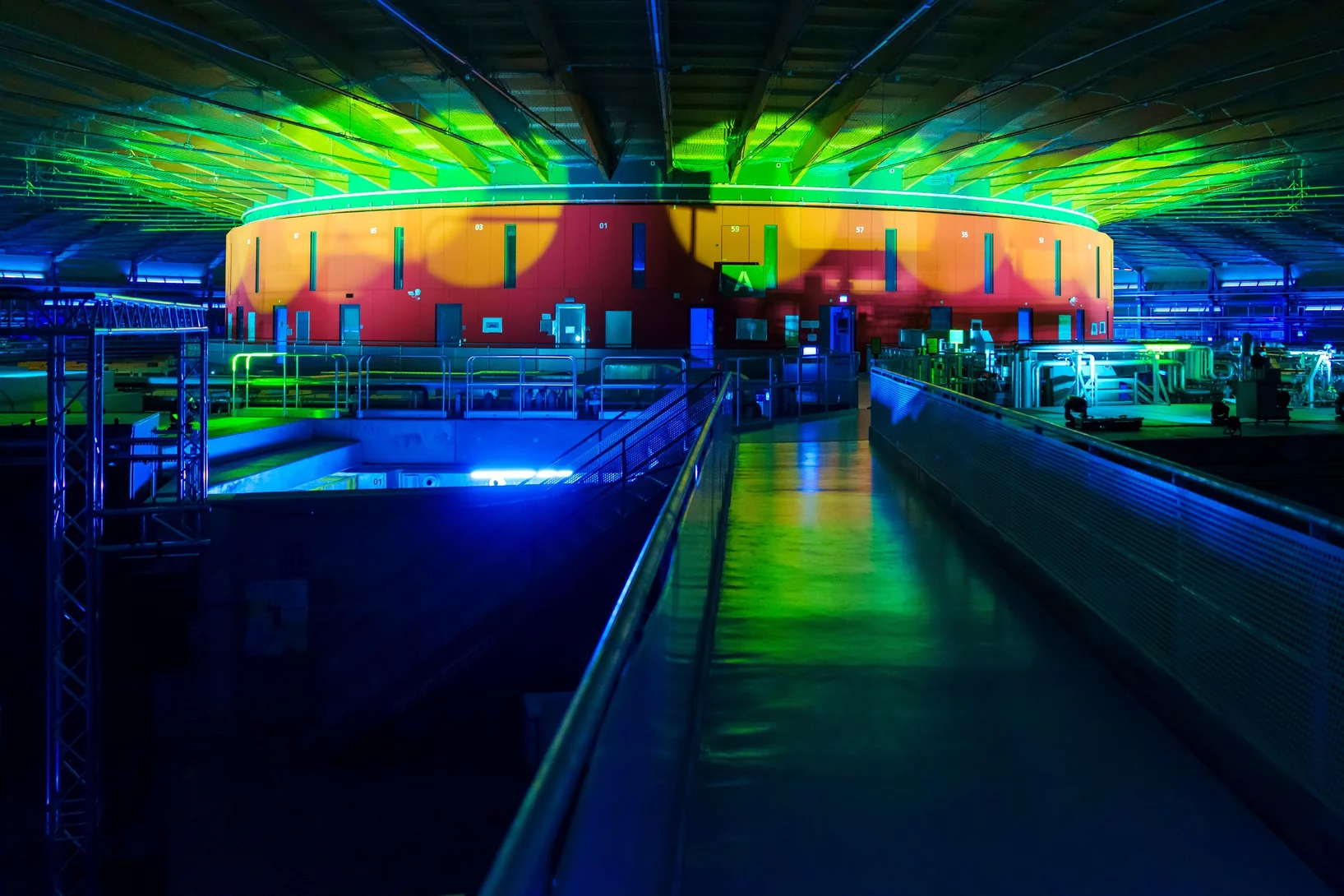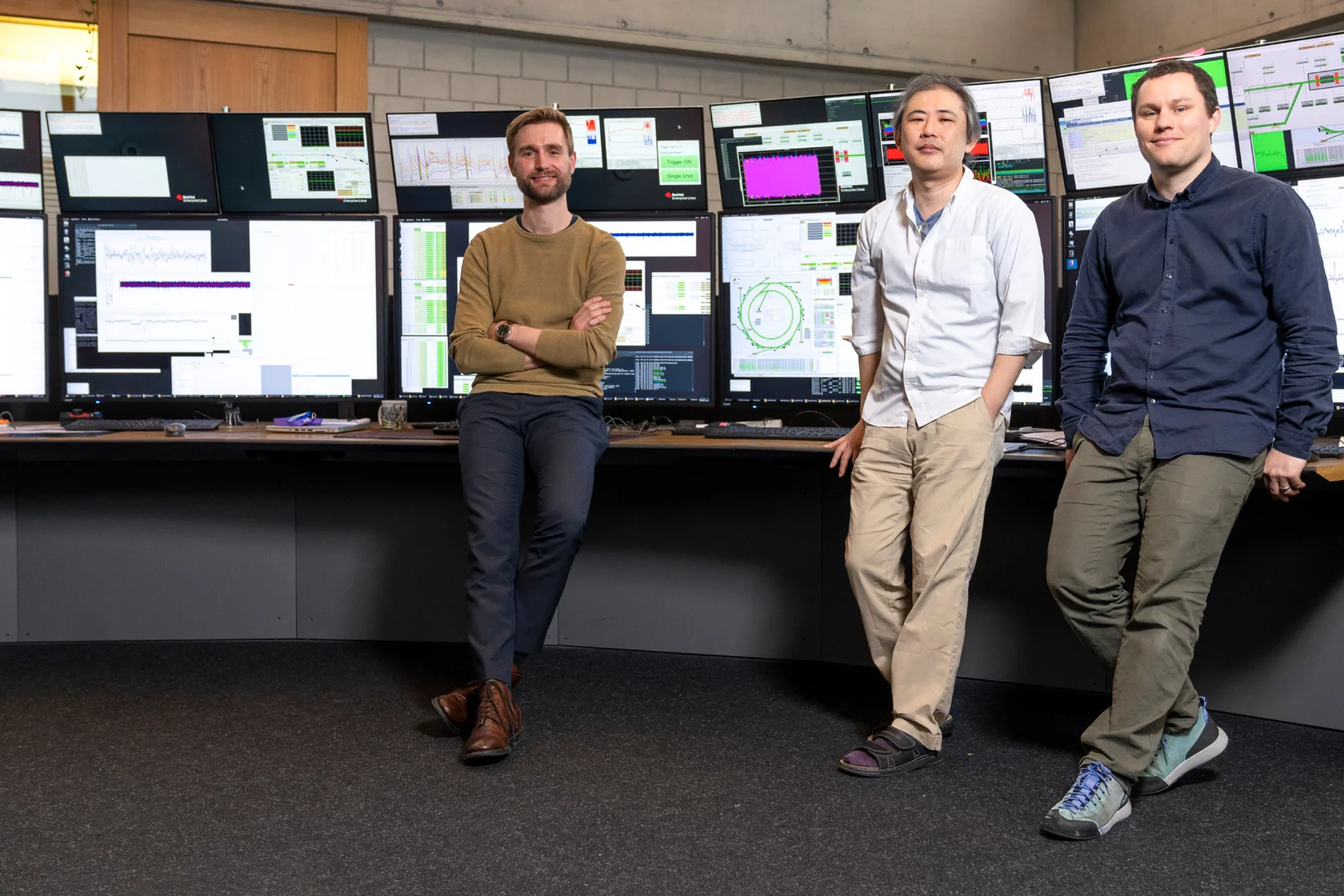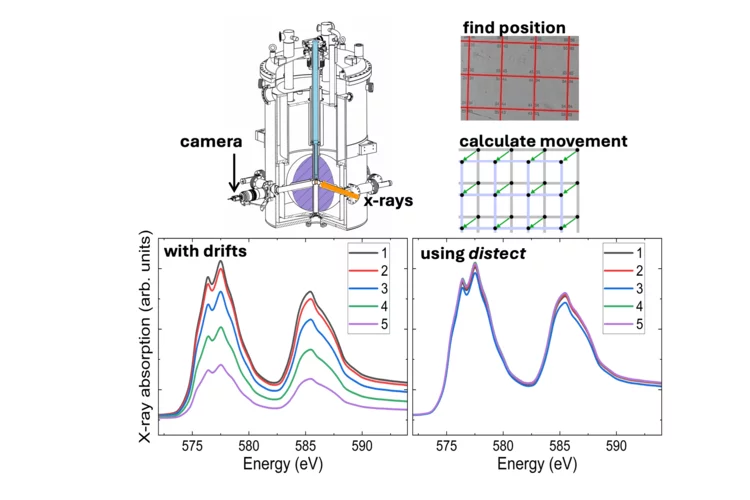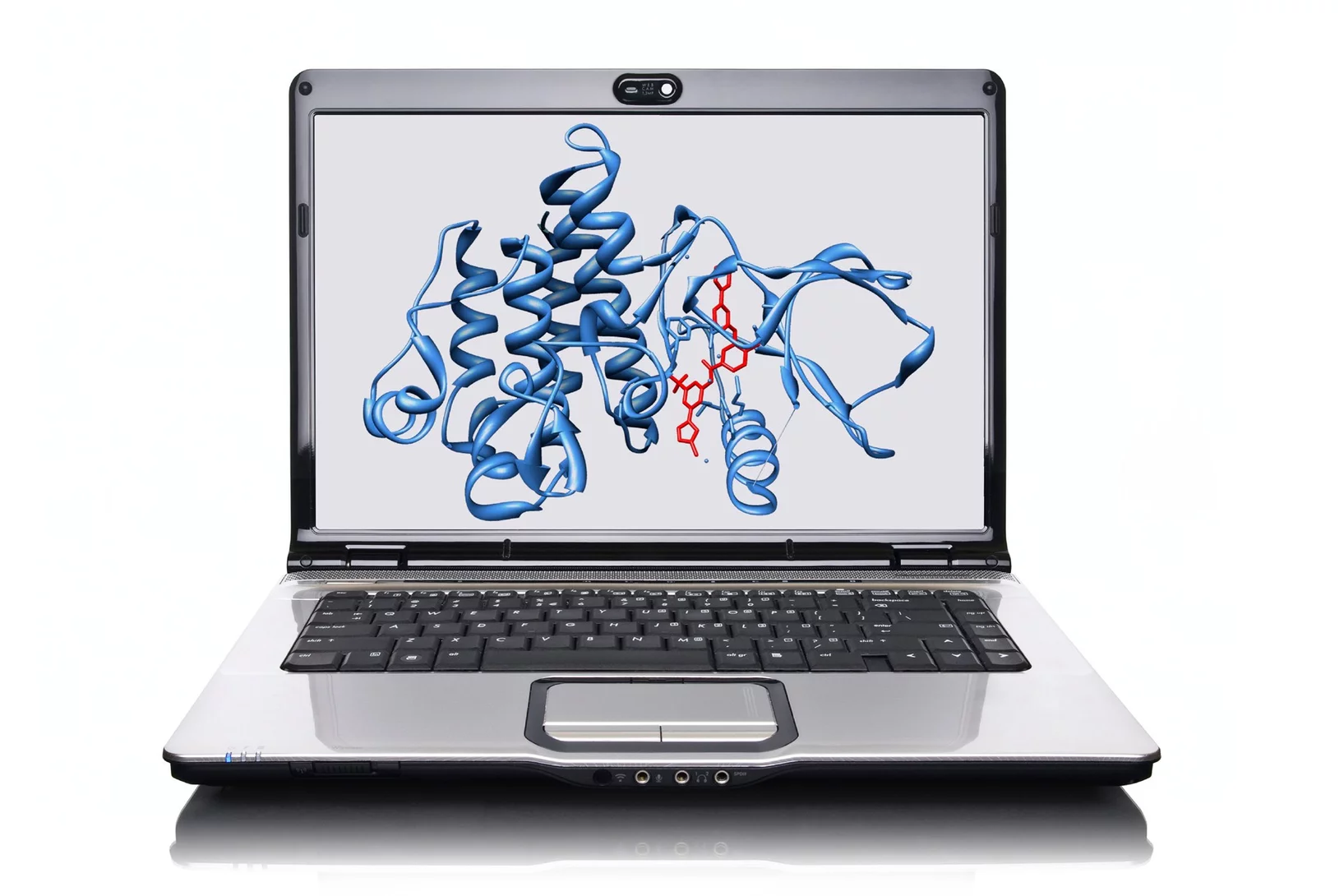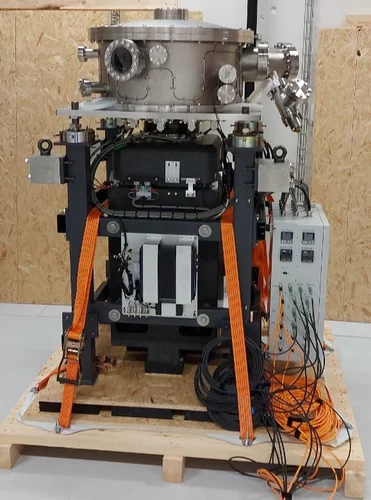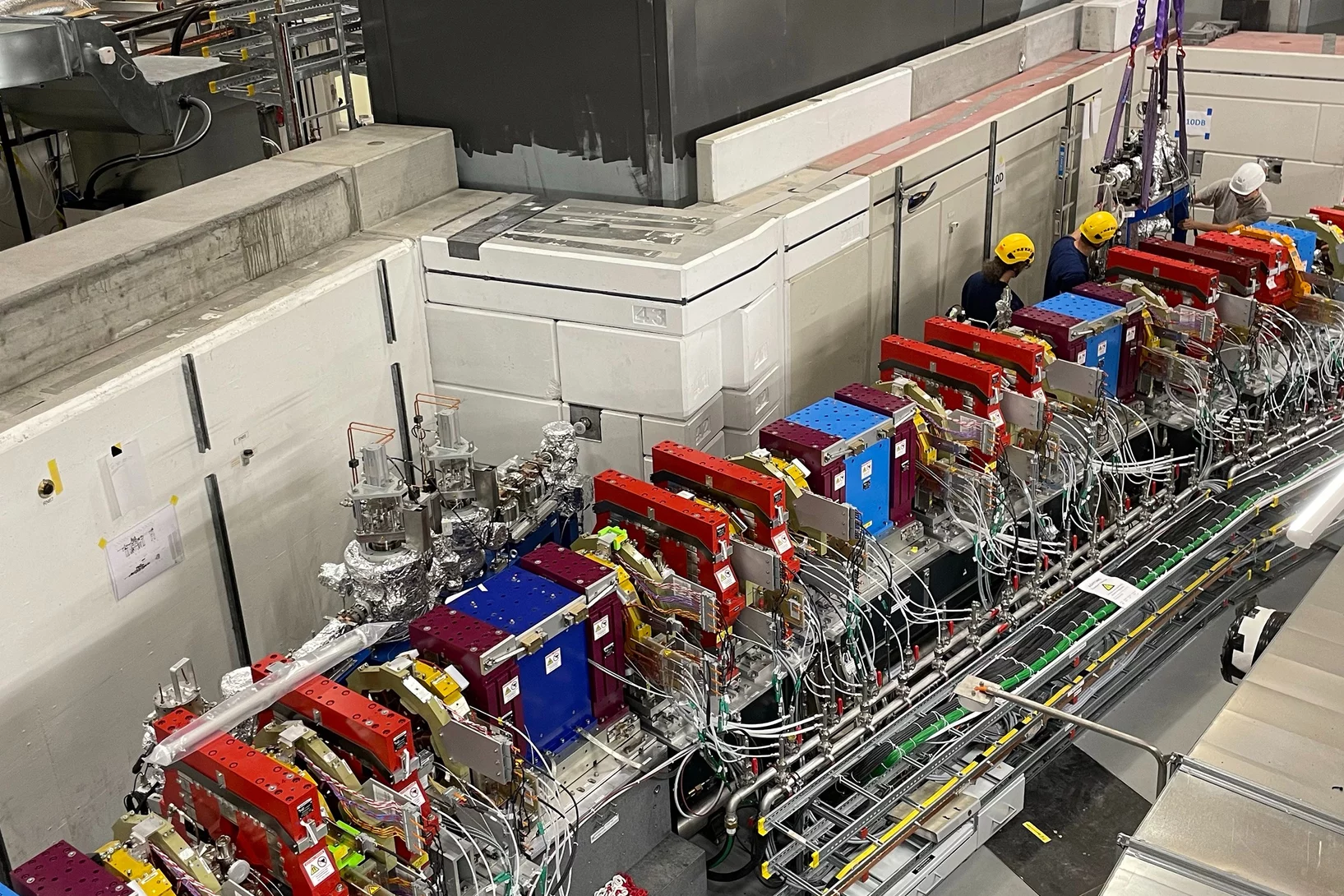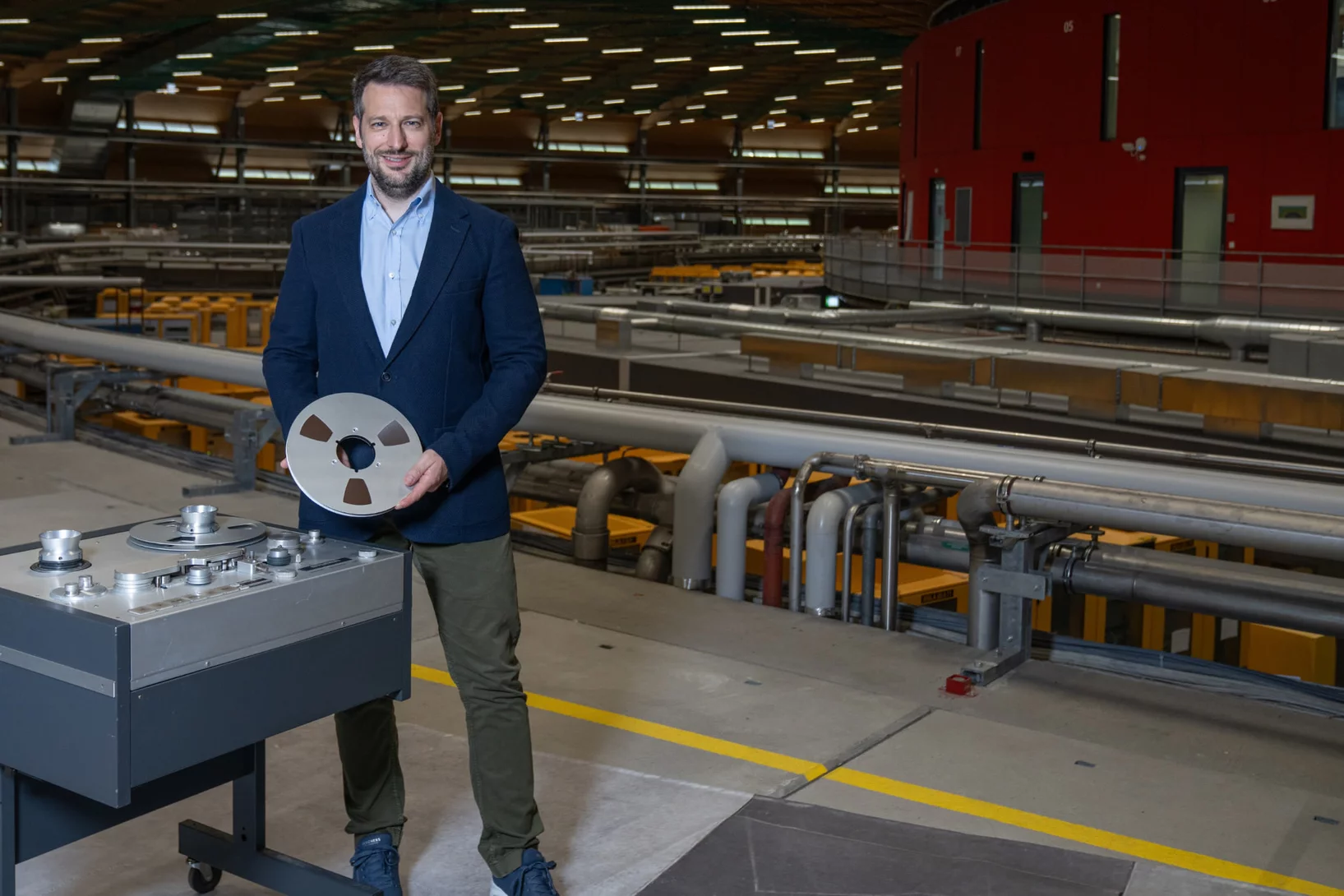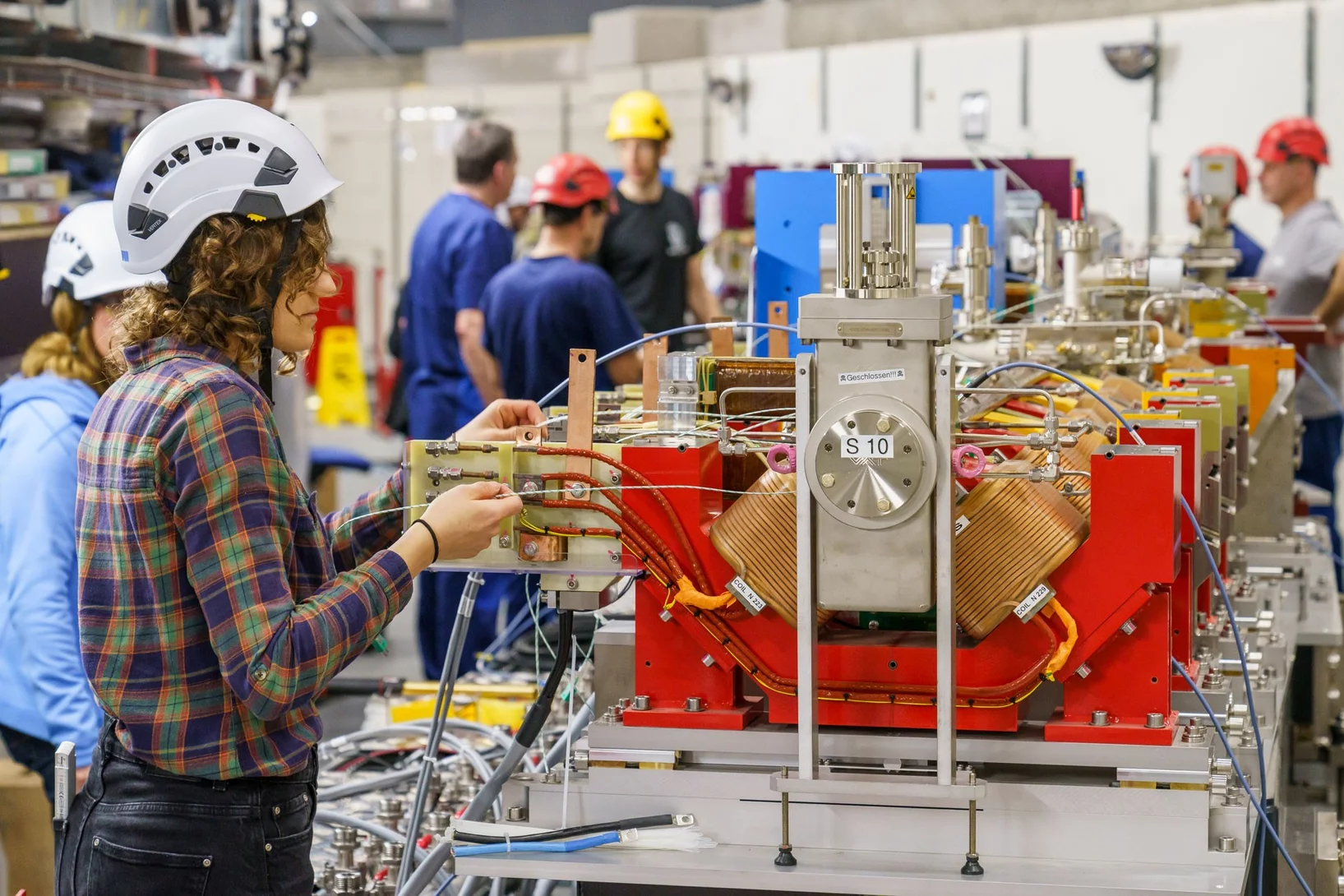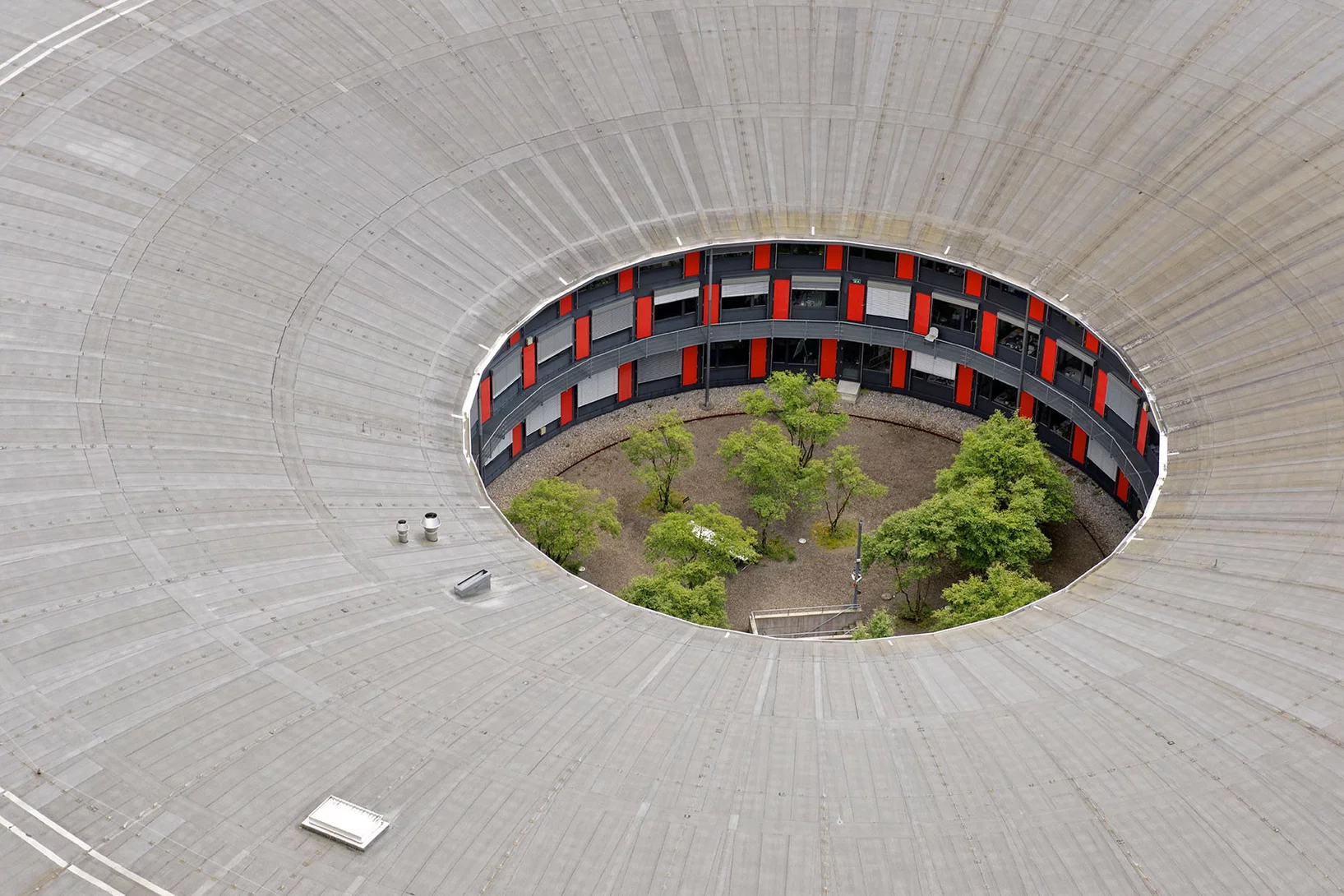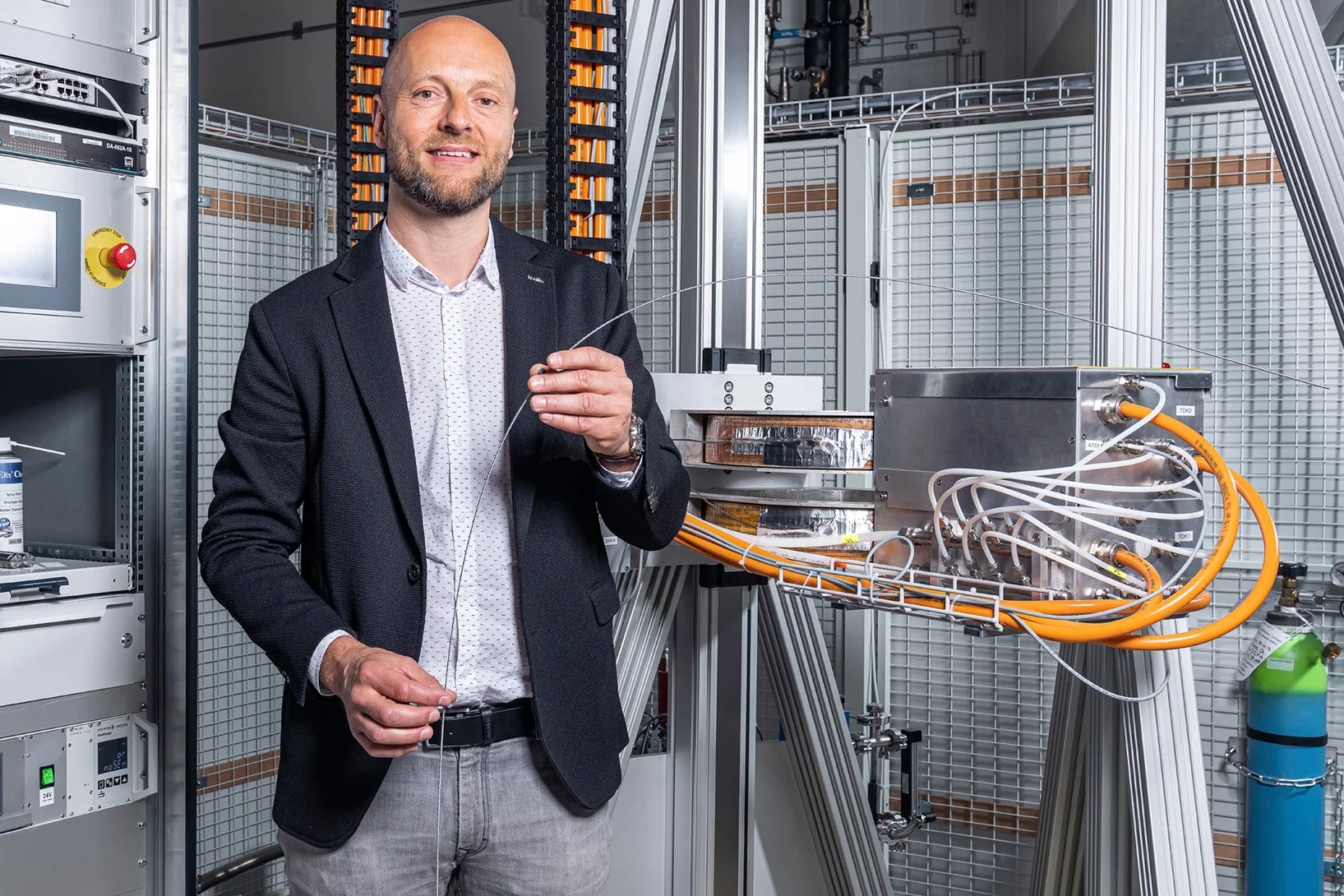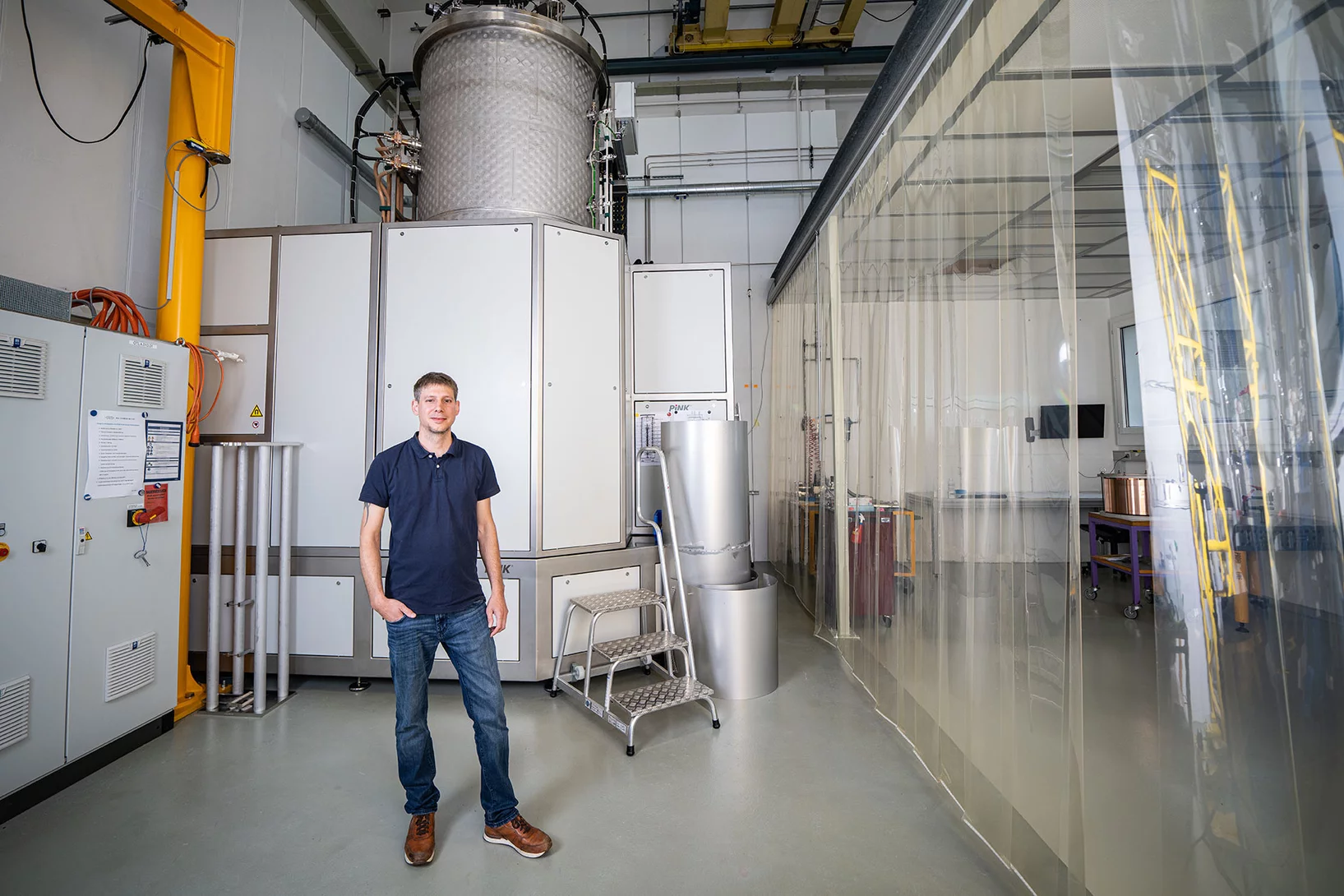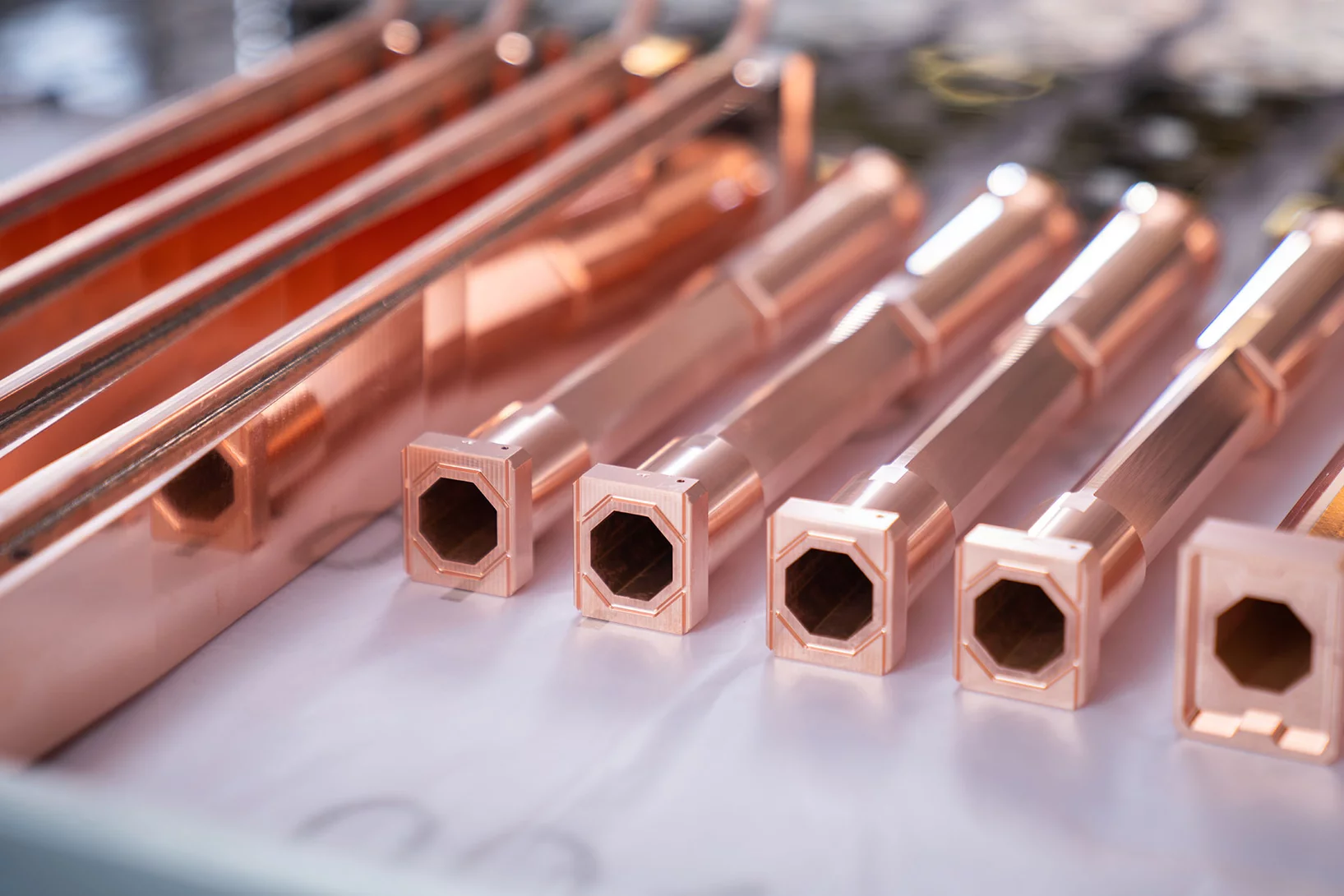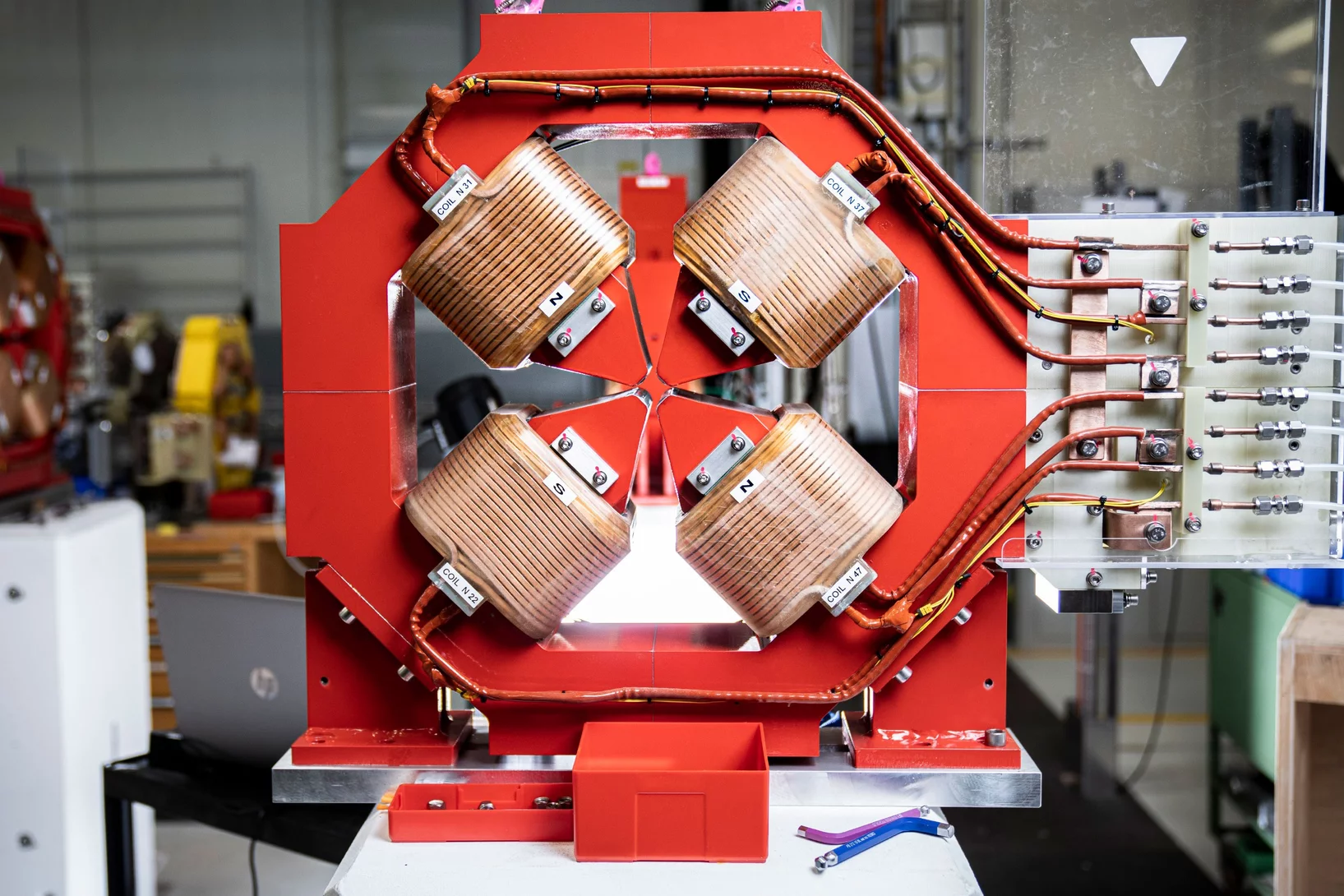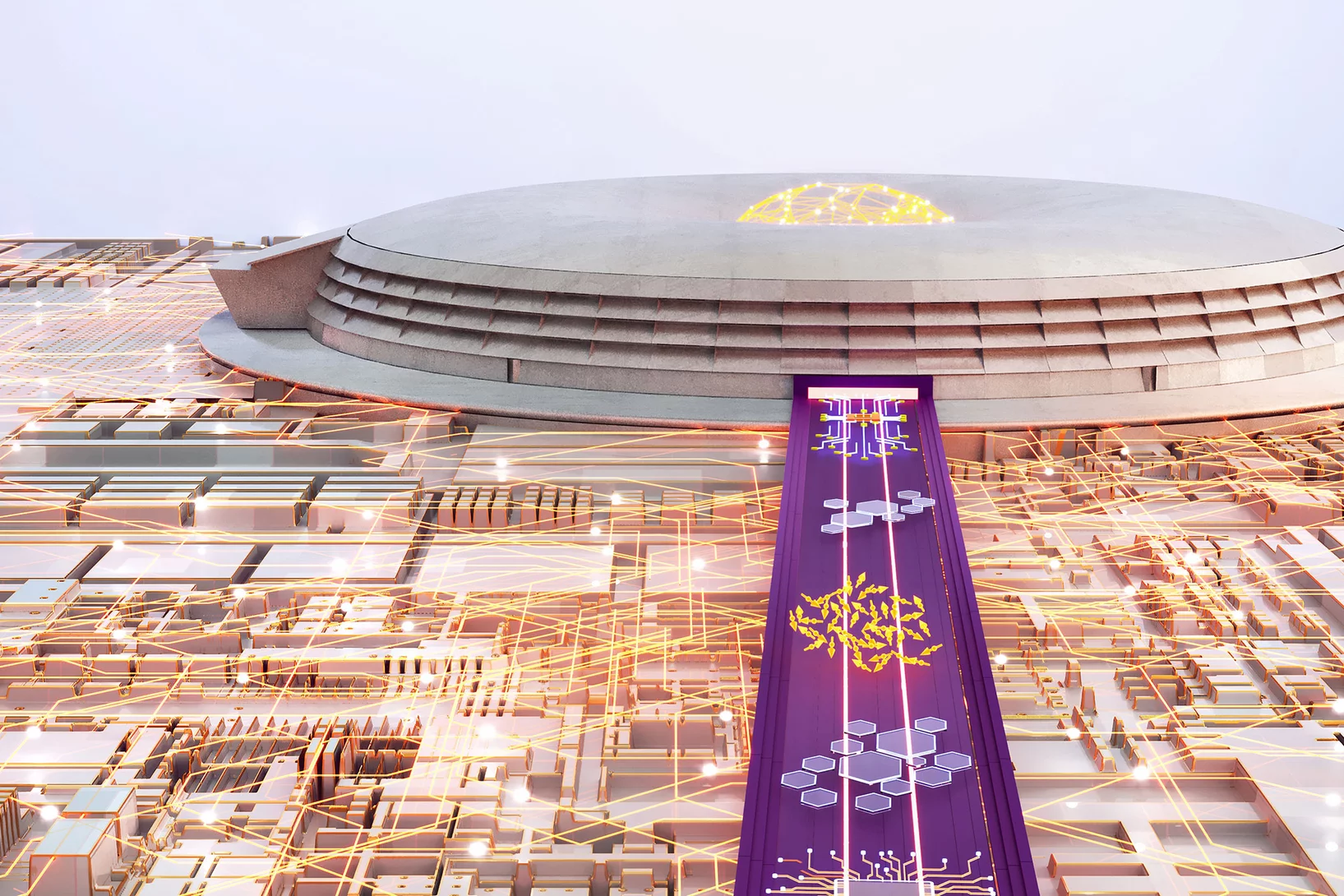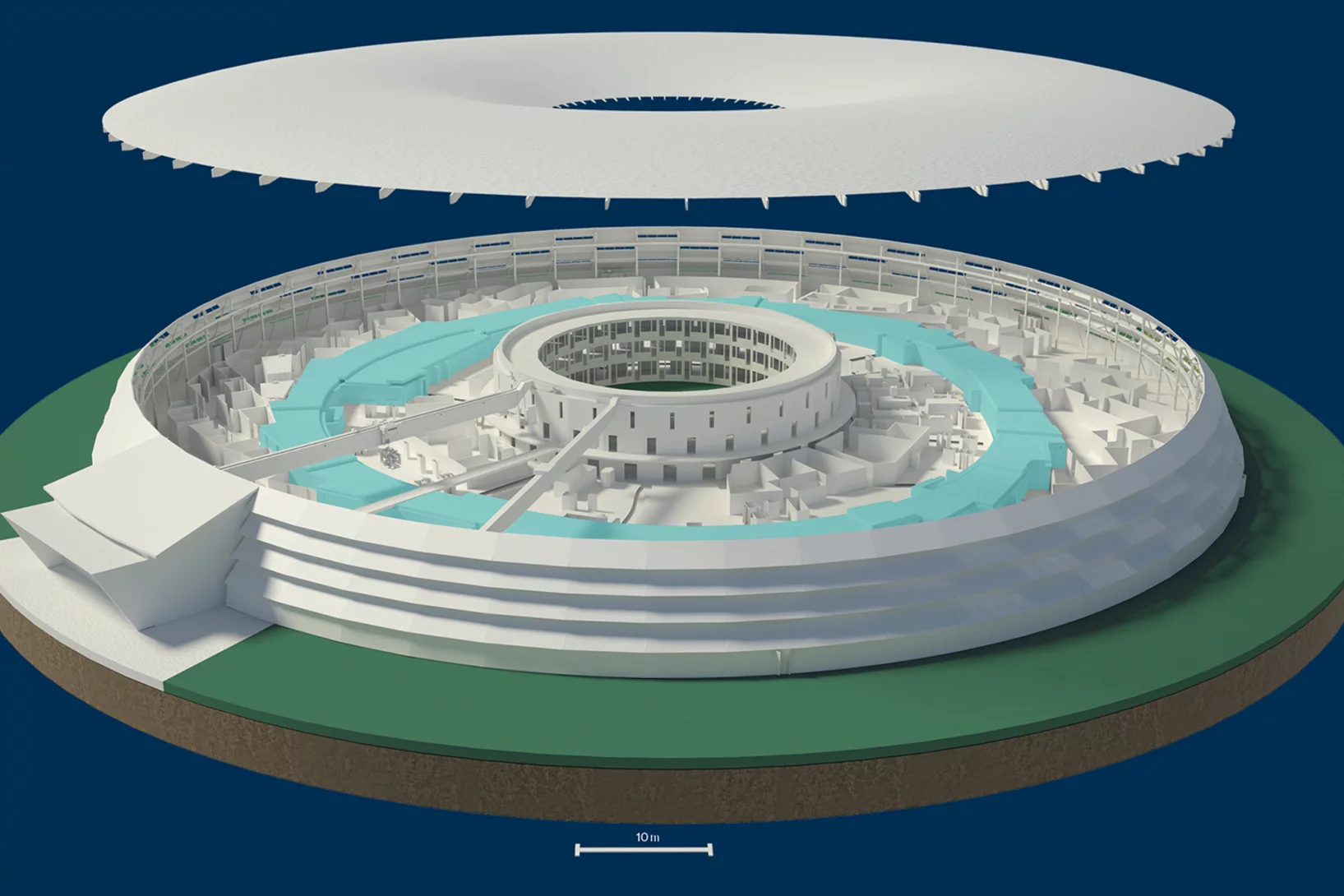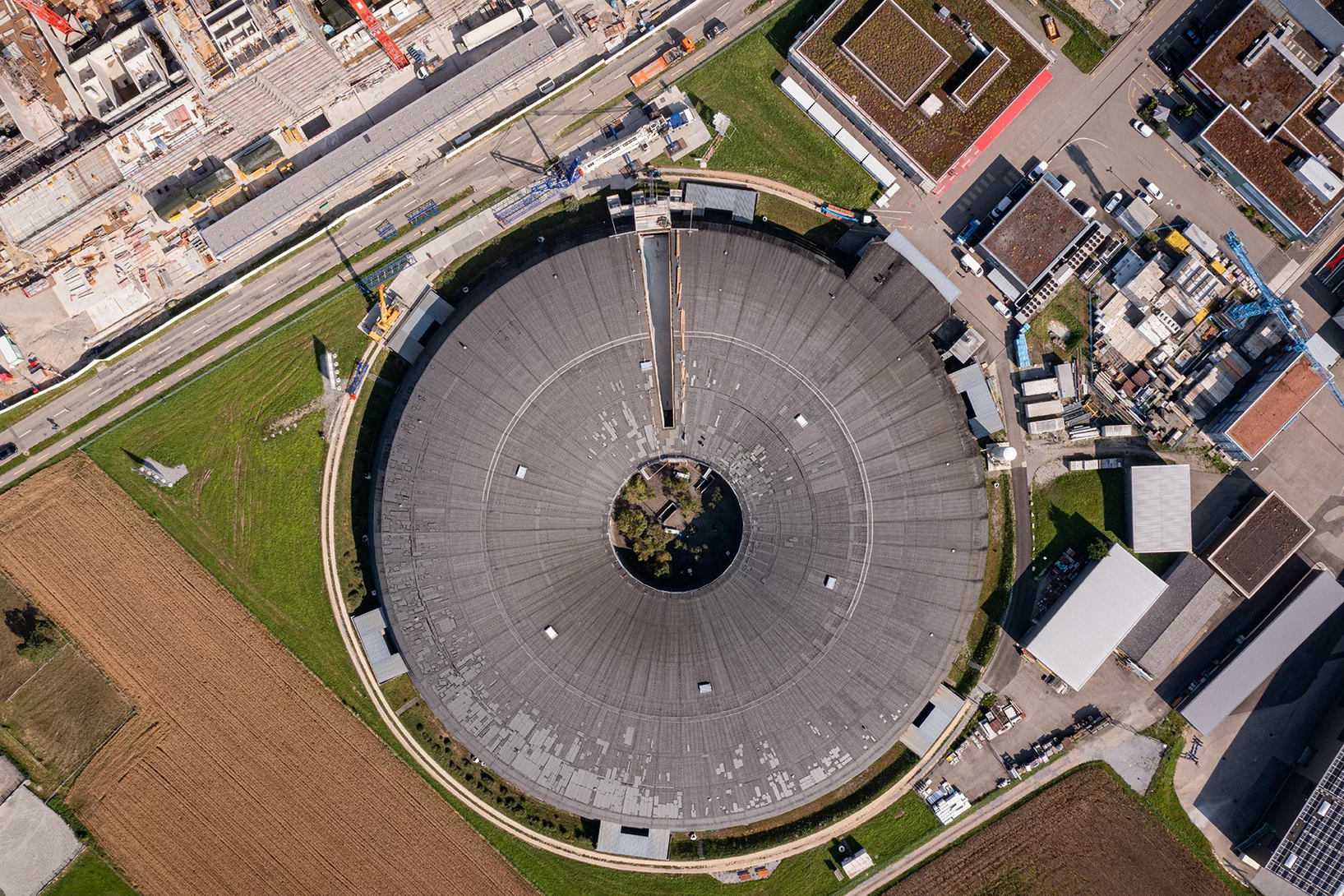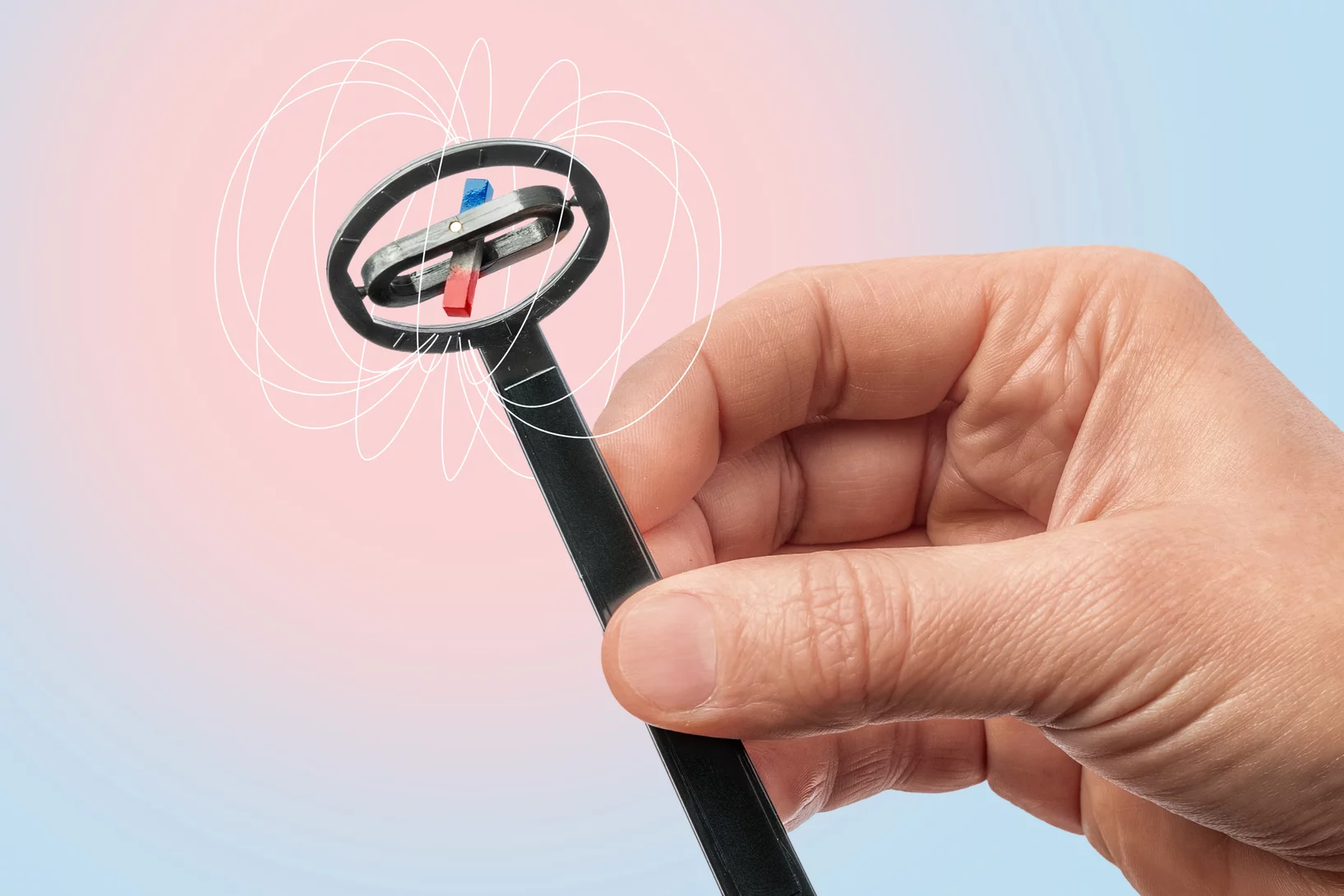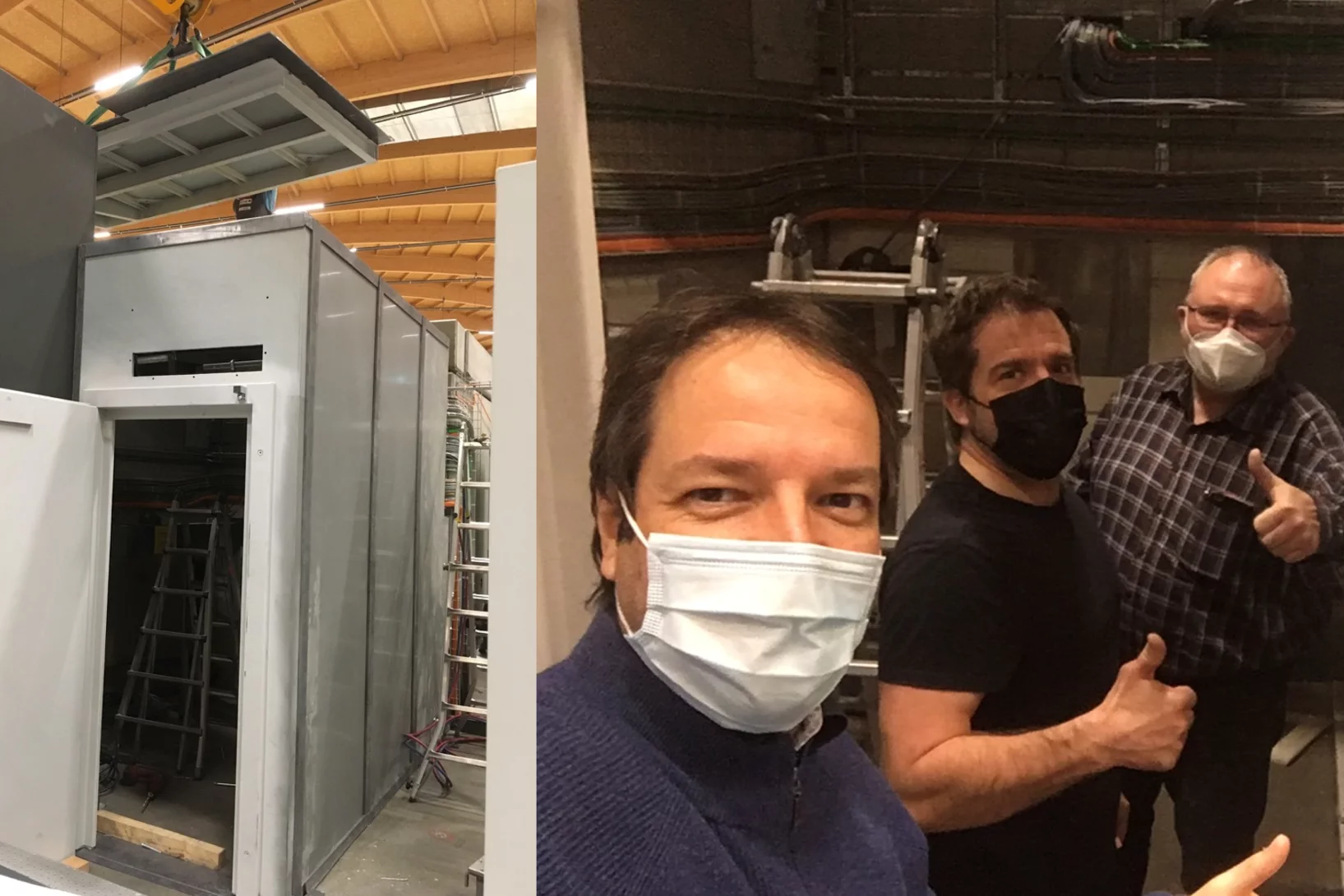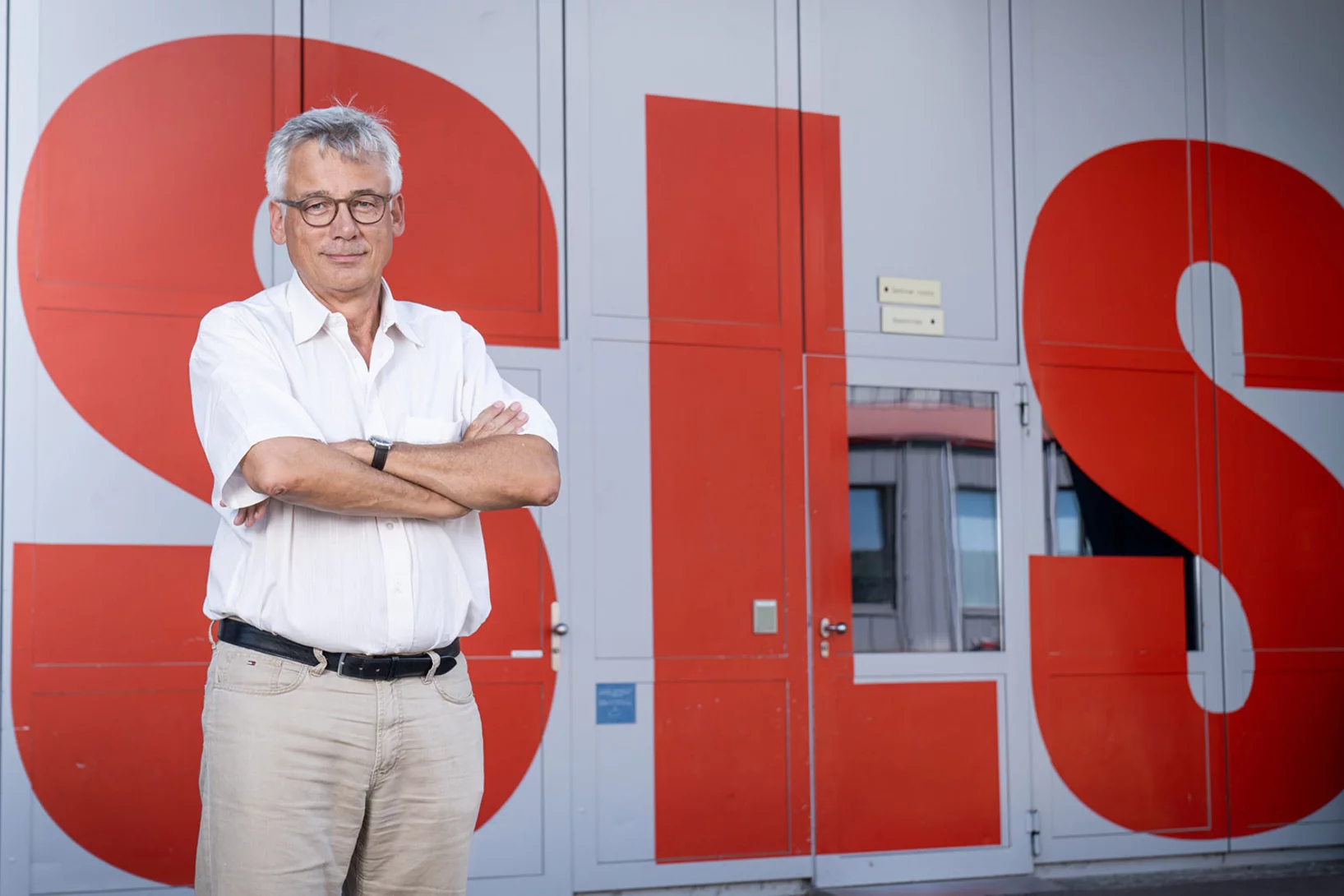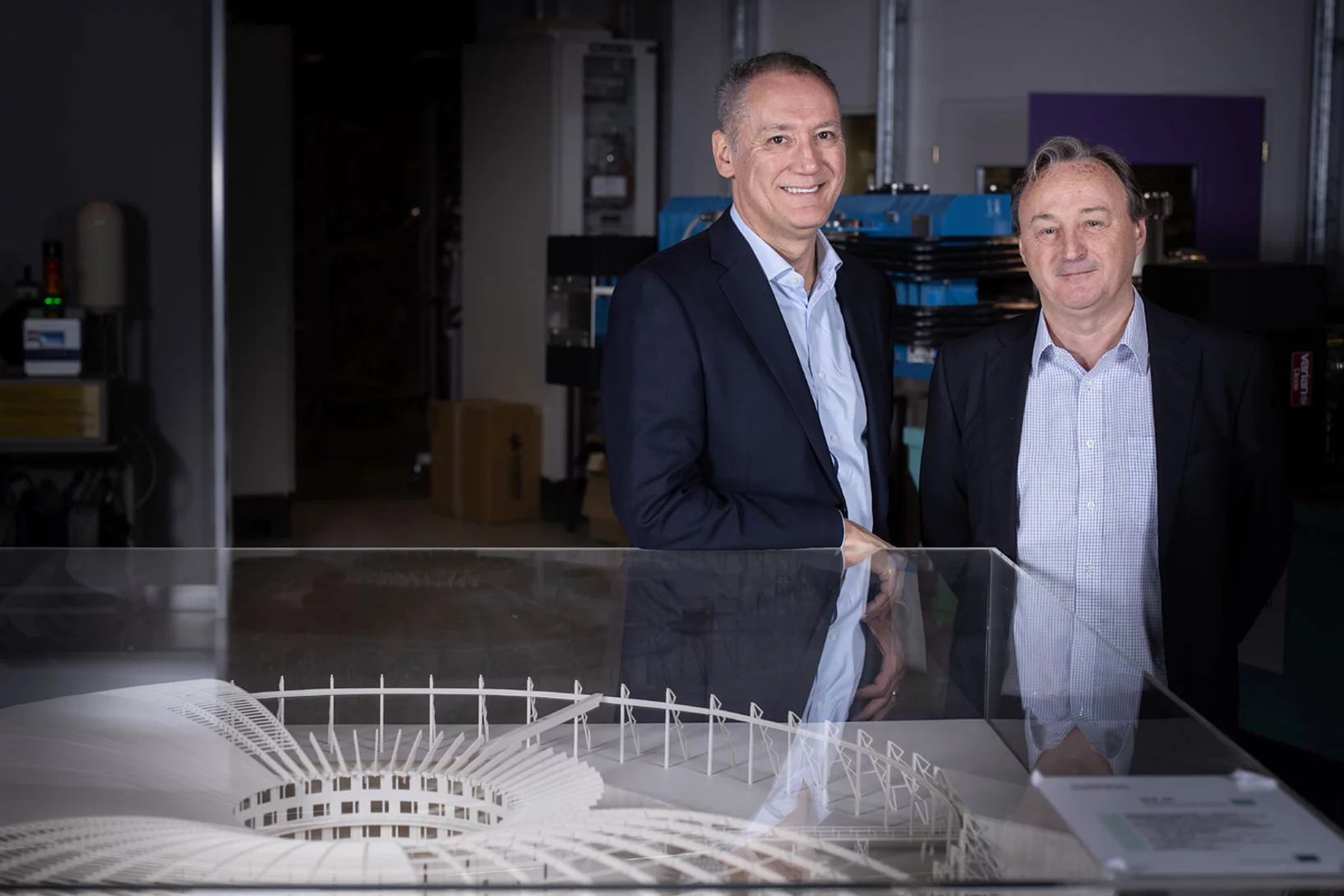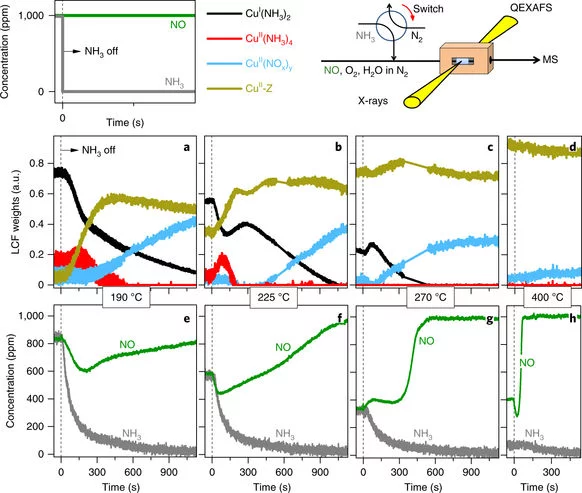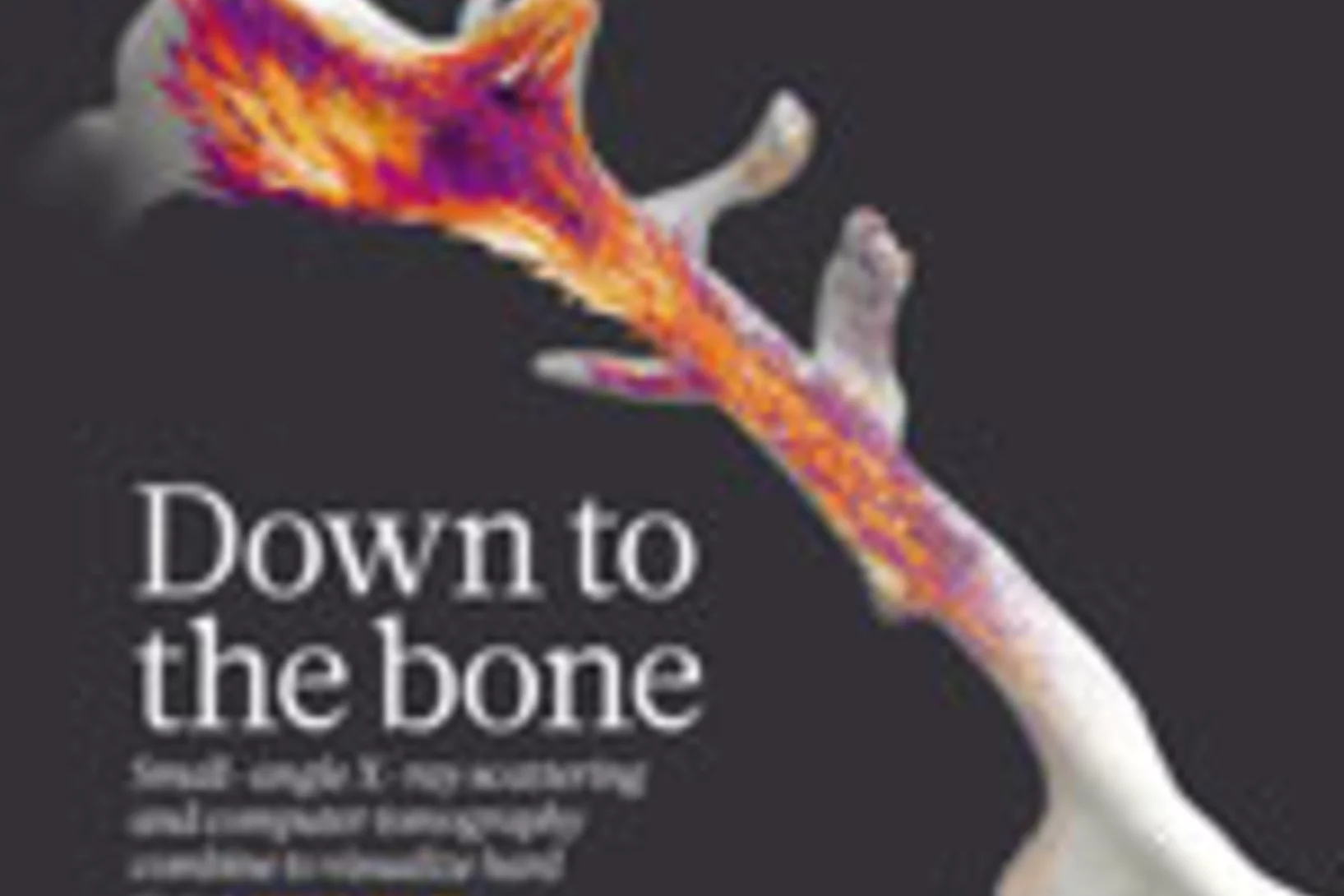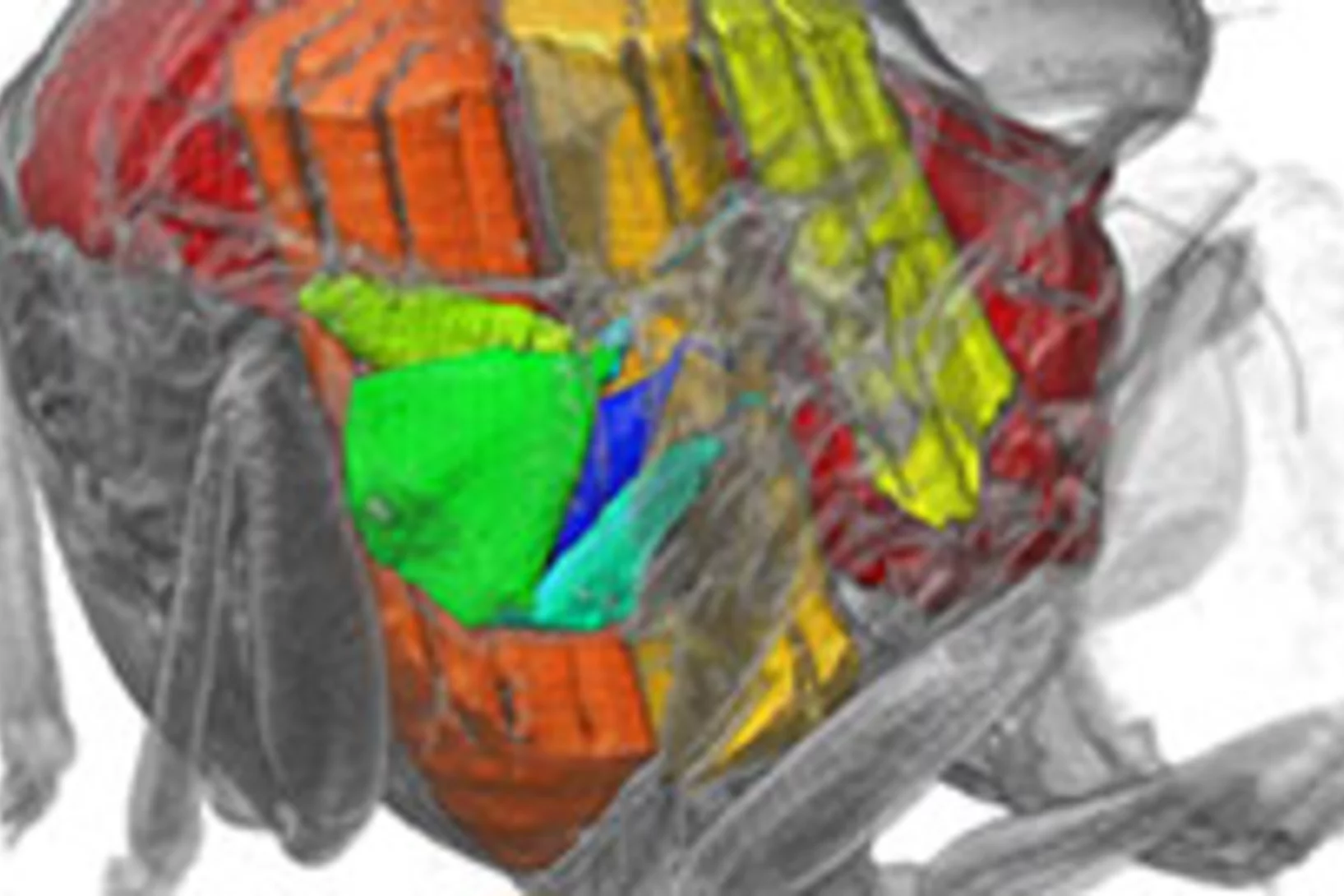The below articles contain recent news related to the upgrade.
Show filters
Une brillante lumière pour la Suisse
La nouvelle Source de Lumière Suisse a été inaugurée.
SLS 2.0: démarrage d’un accélérateur de particules
Les électrons sont de retour: après sa mise à niveau, la Source de Lumière Suisse SLS reprend peu à peu du service.
Sample-position tracking using computer vision algorithms
In a collaboration between PSI and the Zurich University of Applied Sciences, a sample position tracking setup based on a computer vision algorithm was developed to automatically track the sample position. A factor of ten improvement on the overlap between consecutive x-ray absorption spectra was obtained when the automatic sample tracking was used.
Déchiffrer l’énigme des protéines
Cette année, le prix Nobel de chimie est attribué à trois chercheurs qui ont contribué de manière déterminante à déchiffrer le code des protéines, ces importants éléments constitutifs de la vie. Mais pour que des applications puissent être développées à partir de ces connaissances, par exemple dans le domaine médical, des centres de recherche comme le PSI sont indispensables.
New Monochromators for SLS 2.0
The brand-new monochromators that have been built by XDS Oxford for the hard X-ray beamlines at SLS 2.0 have now arrived. They were unpacked beginning of the week, and are currently being tested in our new lab space at Park Innovaare. These advanced instruments will play a crucial role in enhancing the beamline performance, ensuring superior precision and efficiency in the upcoming experiments.
Installation of the first two front ends for the SLS2.0 completed
At the Swiss Light Source SLS of the Paul Scherrer Institute, another important step has been taken towards the completion of the SLS 2.0 upgrade project.
Un changement fondamental
L'intelligence artificielle aide à évaluer efficacement des quantités de données inimaginables et à exploiter pleinement le potentiel des grandes installations de recherche.
Sauver la musique grâce aux rayons X
La SLS joue B.B. King, le King of the Blues! En collaboration avec le Montreux Digital Project, des bandes sonores historiques sont numérisées au PSI.
What will the SLS 2.0 upgrade mean for experiments?
Tighter beams, brighter light and extended photon energies open new experimental possibilities.
SLS 2.0: la lumière fait une pause pour les travaux
La SLS sera temporairement arrêtée dans le cadre d’un grand projet de mise à niveau.
Thank You SLS
Our beamline scientists look back on 22 years of brilliant science made possible by the Swiss Light Source SLS.
Un alliage métallique aux allures d’éponge
Une fois que les chambres à vide ont la bonne forme, elles ont encore besoin d’un revêtement de surface bien particulier.
Un four de six mètres de haut
Les versions les plus compliquées des chambres à vide destinées au projet de mise à jour SLS 2.0 sont fabriquées à l’atelier du PSI.
500 chambres à vide pour le nouvel anneau
Comment naît le tube dans lequel fileront les électrons, une fois le projet de mise à niveau SLS 2.0 terminé.
On-track for SLS2.0: First magnet series measured
Successful measurement of the first 112 magnets puts the PSI magnet section on-schedule to measure all of the 1000+ magnets needed for SLS2.0 by July 2024.
Plus vite et intelligemment
Le PSI regroupe son expertise en matière d'évaluation des données de recherche dans la nouvelle division de recherché Calcul scientifique, théorie et données.
Perspective en 3D: La Source de Lumière Suisse SLS
Accélérateur linéaire, anneau d'accélération, anneau de stockage: notre graphique 3D de la Source de Lumière Suisse montre l'intérieur de l'installation et comment elle sert la recherche.
SLS: le nouveau pont roulant vient du ciel
La Source de Lumière Suisse SLS se voit dotée d’un deuxième pont roulant. Mais comment entre-t-il dans le bâtiment? Le seul moyen est de passer par le toit.
Une force magique qui fait grand effet
Des microrobots ou de meilleurs accélérateurs de particules deviennent possibles par la recherche sur le magnétisme au PSI.
Un nouveau site pour les sciences des données
Un nouveau site du Swiss Data Science Center va voir le jour au PSI. Cette expansion devrait donner un nouvel élan à la science des données en Suisse.
SLS 2.0 approved - TOMCAT 2.0 cleared for takeoff!
In December 2020 the Swiss parliament approved the Swiss Dispatch on Promotion of Education, Research and Innovation (ERI) for 2021 to 2024 which includes funding for the planned SLS 2.0 upgrade. The new machine will lead to significantly increased brightness, thus providing a firm basis for keeping the SLS and its beamlines state-of-the-art for the decades to come. The TOMCAT crew is very excited that the TOMCAT 2.0 plans (deployment of the S- and I-TOMCAT branches, see SLS 2.0 CDR, p. 353ff) have been included in the Phase-I beamline upgrade portfolio. These beamlines will receive first light right after the commissioning of the SLS 2.0 machine around mid 2025. A first milestone towards this goal has just been achieved, with the successful installation of the S-TOMCAT optics hutch during W1 of 2021. The TOMCAT scientific and technical staff would like to thank Mr. Nolte and his Innospec crew for delivering perfectly on schedule.
Le PSI équipe la Source de Lumière Suisse SLS pour l’avenir
Feu vert pour la SLS 2.0: l’upgrade de la Source de Lumière Suisse SLS peut avoir lieu. Le financement est assuré dans le cadre du message FRI 2021-2024 approuvé à la mi-décembre.
«Nous préparons la SLS à l’avenir»
La Source de Lumière Suisse SLS doit faire l’objet d’une mise à jour afin qu’elle puisse aussi permettre une recherche d’excellence au cours des prochaine décennies. Dans cette interview, Hans Braun, chef du projet SLS 2.0, explique en quoi consiste cet upgrade.
SLS 2.0: l’upgrade de la Source de Lumière Suisse SLS
Au cours des prochaines années, la Source de Lumière Suisse SLS fera l’objet d’un upgrade: la SLS 2.0. Cette transformation rendue possible par de la technologie dernier cri donnera une grande installation de recherche à la hauteur des besoins des chercheurs pour les prochaines décennies.
Time-resolved copper speciation during selective catalytic reduction of NO on Cu-SSZ-13
Through the combination of time-resolved X-ray absorption spectroscopy and transient experimentation, we were able to capture an ammonia inhibition effect on the rate-limiting copper re-oxidation at low temperature.
Nanostructure surveys of macroscopic specimens by small-angle scattering tensor tomography
The mechanical properties of many materials are based on the macroscopic arrangement and orientation of their nanostructure. This nanostructure can be ordered over a range of length scales. In biology, the principle of hierarchical ordering is often used to maximize functionality, such as strength and robustness of the material, while minimizing weight and energy cost.
Un film en 3D montre ce qui se passe à l’intérieur d’insectes en plein vol
Grâce aux rayons X produits par la Source de Lumière Suisse SLS, des prises de vue inédites des muscles que les mouches utilisent pour voler (muscles alaires) ont pu être réalisées, à haute vitesse et en 3D. Une équipe de scientifiques de l’Université d’Oxford, de l’Imperial College de Londres et de l’Institut Paul Scherrer (PSI) a développé un procédé de prise de vue tomographique révolutionnaire. Grâce à lui, ils ont pu filmer ce qui se passe à l’intérieur d’insectes en plein vol. Ces films permettent de découvrir en profondeur l’un des mécanismes naturels les plus complexes, et montrent que les déformations structurelles sont la clé pour comprendre la manière dont la mouche contrôle son battement d’aile.
